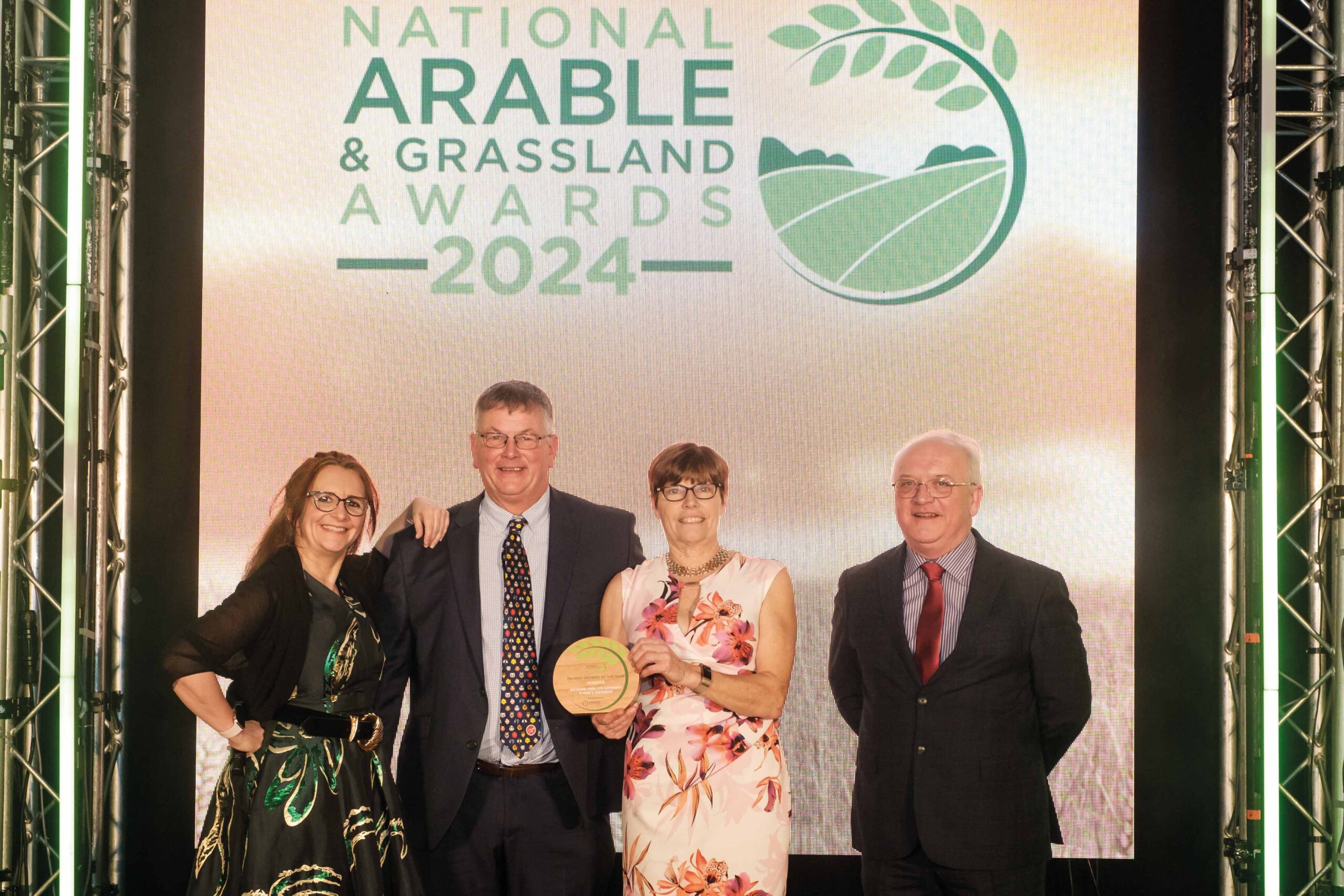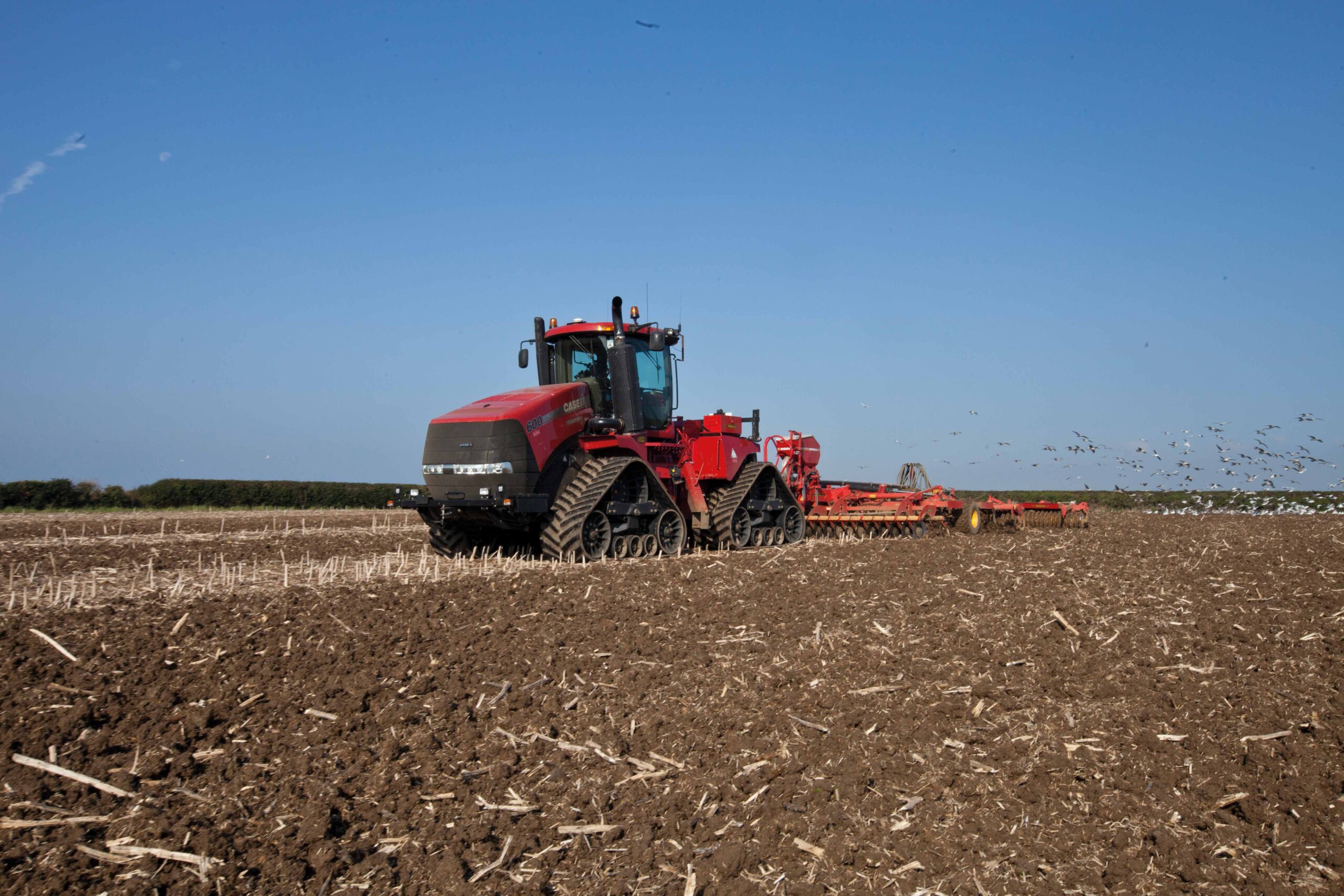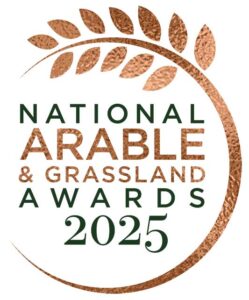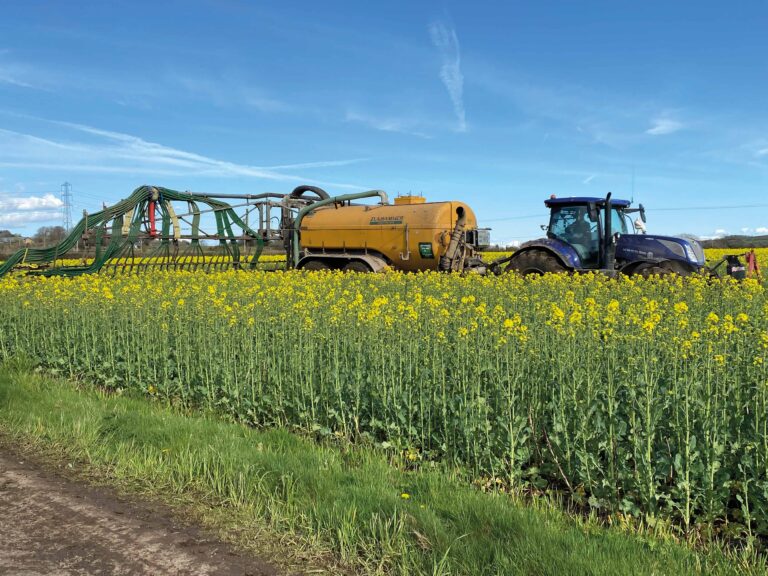Richard and Lyn Anthony, 2024 Oilseed Growers of the Year and overall Growers of the Year, moved to their current premises on the Tythegston Estate, near Bridgend, in 1997, having previously tended a mixed hill farm. At the time, the farm was just 45ha and the pair supplemented the income with contracting work.
“We always wanted to farm,” Richard says. “The contracting gave us the means to do that, allowing us to build up collateral and justify the expenditure on larger machinery.”

It wasn’t just agricultural contracting. Richard tried his hand at landscaping work to keep the business progressing in the winter months. Early on, though, the most successful operation was square baling and wrapping.
The area farmed jumped substantially in 2001, when other farmers on the estate made the decision to move to Hereford – just after the foot-and-mouth epidemic.
“We had tendered for a contract-farming agreement nearby,” Lyn explains. “And we found out that we were successful on the same day that we were offered additional land here.”
At the time, they had expanded the farm to 80ha. The contract-farming agreement and increase in their tenancy saw this surge to 650ha. Richard admits that it was nerve-wracking and bringing the additional ground in line with their original farm took a lot of hard work and investment.
Economies of scale
The expansion of the business meant existing operations had to be streamlined, and efforts had to be made to integrate nearly 600ha into the existing rotation.
Richard and Lyn were already making inroads into what we now call regenerative farming.
They had moved to minimum tillage where appropriate, with the plough only being used to reset ground that desperately needed it, and were looking at methods to integrate more livestock into the rotation.
“Some of the land hadn’t had livestock on it for over 20 years,” explains Richard. “We started putting in cover crops over winter and bringing in tack sheep where appropriate to boost the organic matter levels on the ground. This was alongside importing turkey muck.”
There were also efforts to improve infrastructure on the site. “Some of the ground was very stony, so we hired a picker to bring these up and then used the stones to establish tracks around the yard.”
Having a substantial area of land to farm means the rotation is varied, based on soil types. However, key to the system is keeping a crop growing in the ground 12 months of the year.
Despite winning their award for growing oilseed rape, the rotation on lighter land is built around forage maize, which is exported to various dairy farms in the area.
“Where we can grow maize, we keep it to one in six, with a total of nine different crops within that time,” Richard says.

First wheats are generally the starting point, direct-drilled when possible, followed by rye and westerwolds, then maize, wheat again, ryes and westerwolds, maze and oilseed rape.
To limit nitrogen costs and protect against flea beetle, the rape crop is sown with companion crops of spring beans, vetch and buckwheat.
“It helps on multiple levels,” Richard explains. “The buckwheat mines phosphate from the soil, which the rape can take up, and having the companions in the soil keeps the canopy open, which encourages natural predators.
“We also pay close attention to varieties, focusing on vigour and yield so we can keep seed rate low.”
Before the rotation switches back to wheat, a cover of phacelia is established to build biomass and fix nitrogen in the soil, with wheat being direct-drilled straight into this if conditions allow.
On heavier ground, maize is pulled from the rotation, with wheat, oilseed rape, phacelia, wheat and Italian ryegrass, which stays in the ground for two seasons, established over five years. Efforts are being made to increase the number of crops present in each rotation, with trials of lupins and various types of beans taking place last year.
This methodology has continued as the farm has grown further. Richard and Lyn have tendered for additional land since, with the cropping area now exceeding 1,200ha.
Diversification
As the business has developed, Richard and Lyn, along with their son, David, who now heads up the contracting business, have looked for ways to continually add value to what they do.
When the farm and contracting businesses had both become significant enterprises, the decision was made to split them in 2015 and run them as separate companies.
“It got to a level where we needed that additional structure,” Richard says. “The contracting business can justify its own machinery spend due to the additional work, and the farm then benefits from that because we hire David in to handle forage work and other tasks on our own land.”
A year later, Richard and Lyn tendered to handle digestate for Severn Trent, spreading it on their own land with the business’ own umbilical system and for other farms in the local area through the contracting side.
A total of 70,000cu m goes through the farm each year, stored in a purpose-built lagoon or in alligator bags placed at remote sites.
“Now we don’t use any artificial fertiliser,” Richard explains. “We’re currently applying nitrate at about 250kg/ha, using an umbilical system on most of our ground, which limits compaction and gives us an element of flexibility.”
They also installed a 1kW biomass boiler in the same year and invested heavily in the infrastructure for this. Additional drying floors were installed, enabling them to dry and store woodchip, as well as bring the moisture down in the grain.
Eight years later and the family have expanded the farm’s offering, contract drying various materials for different companies in the area.
Investing for the future
The priority is to maximise their income, not just through measured diversification, but also by continuing to keep inputs low and yields high.
Both Richard and Lyn feel as if they have successfully transitioned the farm to a more sustainable way of working, and they are regularly taking part in crop trials and exploring additional
cropping options.
However, this comes at a significant cost. They have had to continually reinvest and built a substantial machinery fleet to handle the varied cropping, regardless of the conditions.
This includes four drills, from Mzuri, Horsch and Vaderstad – each of which can work in certain soil types, or to establish a particular crop.
“A lot of our kit has been purchased second-hand to reduce that initial capital cost,” Richard says.
“And we often make adaptions to our equipment to increase their versatility. Purchasing machinery like this fits into the way we try to work, which is to learn about and trial as many methods as we can.”
Lyn concludes: “We’ve invested heavily to get our business to the point where we can move with the conditions, pivot where necessary, and keep crops in the ground.
“Taking ground out of production to meet environmental measures makes no sense if you must import food. Having a crop in the ground all year round will sequester huge amounts of carbon, and we’re showing that you can do this sustainably.”
Enter or nominate someone
 Could you be the next Grower of the Year, or do you know someone who could be?
Could you be the next Grower of the Year, or do you know someone who could be?
Entries are now open for the 2025 National Arable and Grassland Awards.


